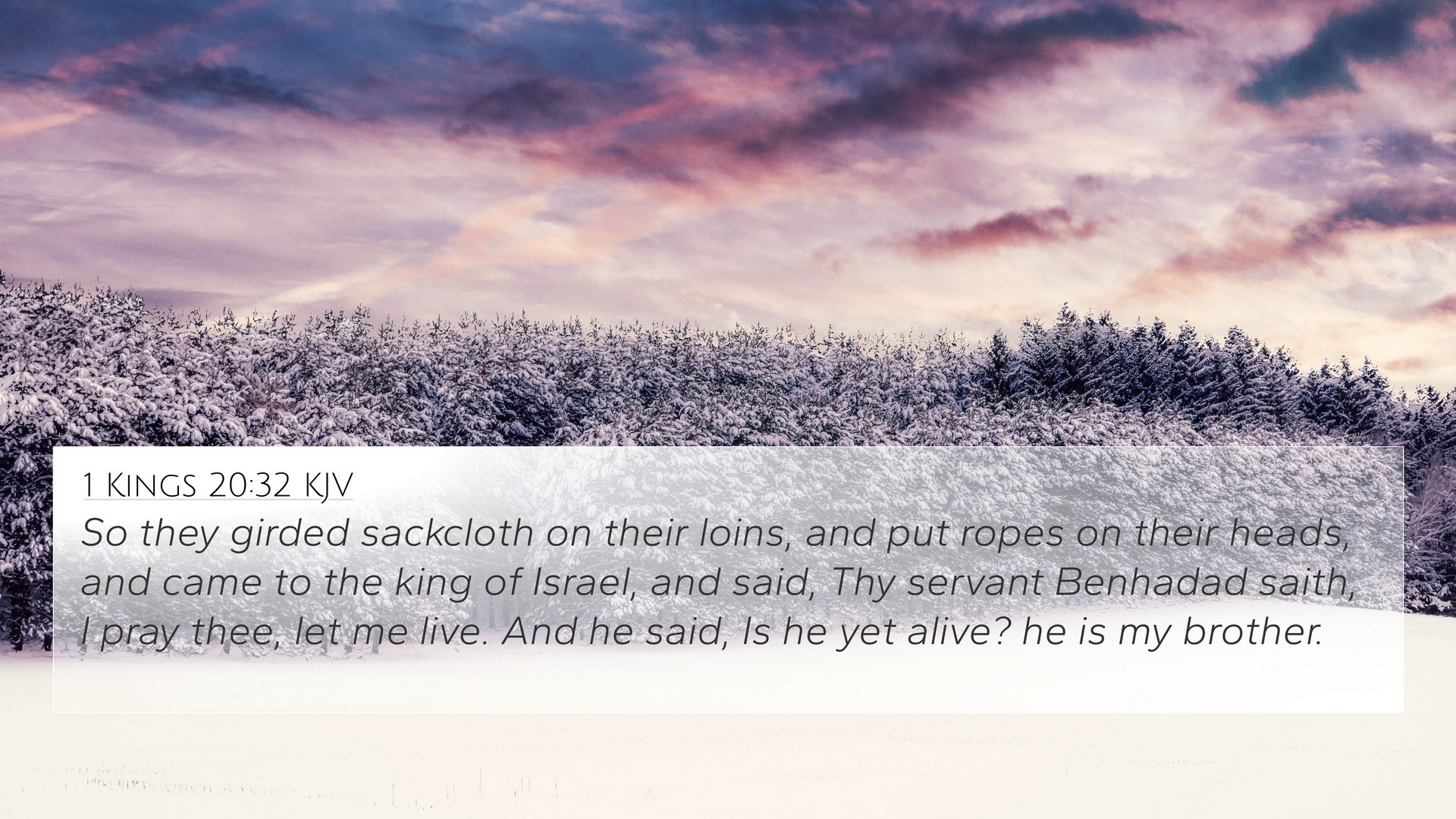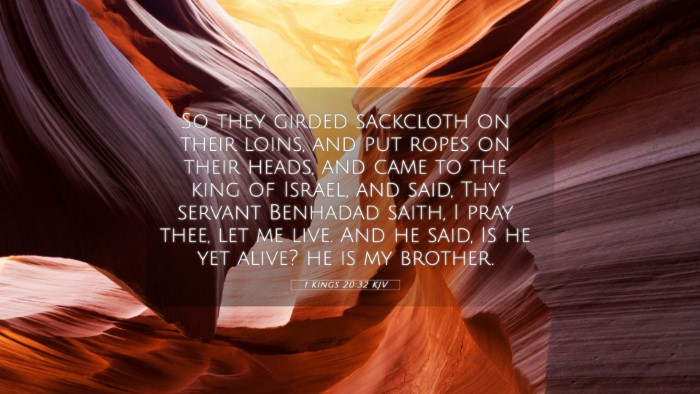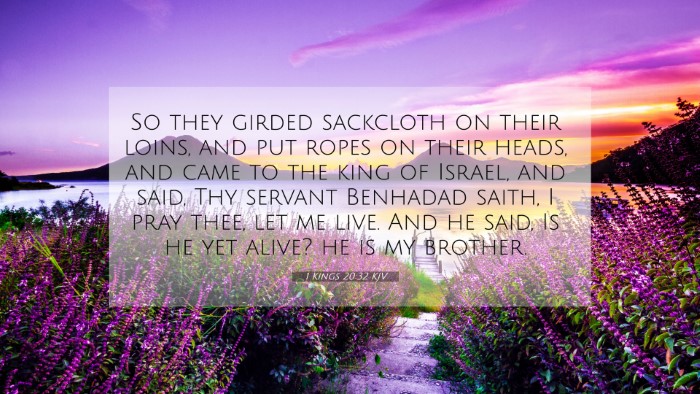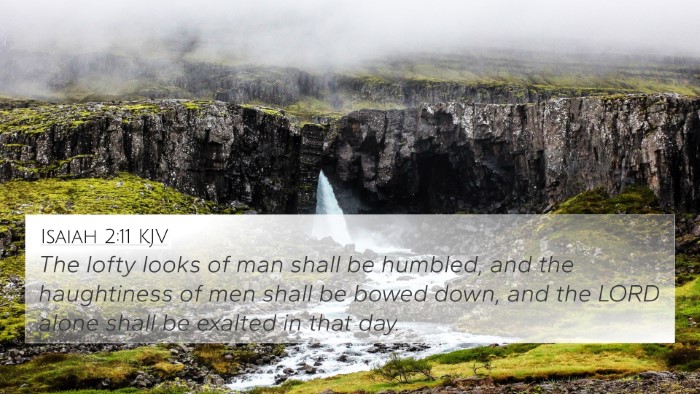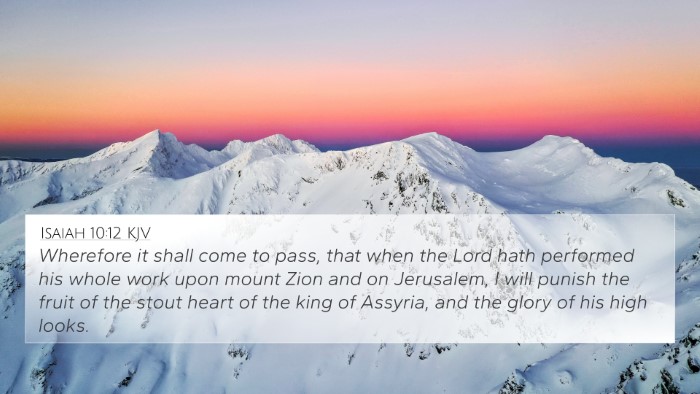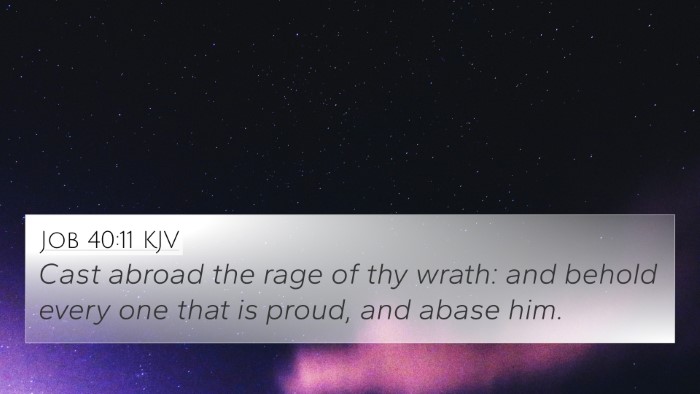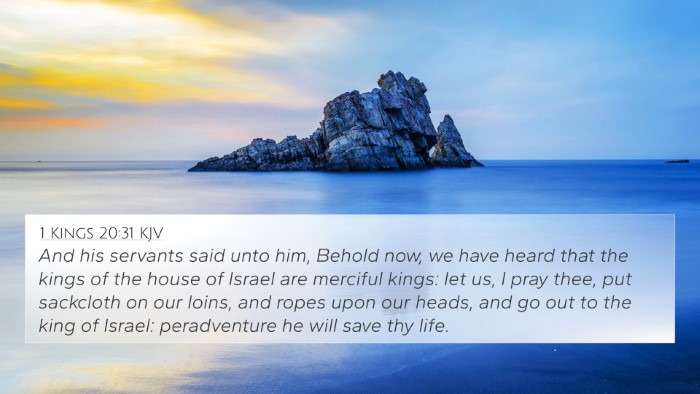Understanding 1 Kings 20:32
1 Kings 20:32 states: "So they girded sackcloth on their loins, and put ropes on their heads, and came to the king of Israel, and said, Thy servant Benhadad saith, I pray thee, let me live. And he said, Is he yet alive? he is my brother."
This verse encapsulates a moment of submission and acknowledgment of mutual respect among adversaries, which provides rich ground for interpretation.
Summary of Key Insights
- Symbolism of Sackcloth: Sackcloth is historically used as a sign of mourning, repentance, or humility. The inhabitants of Aram (Syria), led by Benhadad, express their dire situation and plea for mercy through this act (Matthew Henry).
- The Significance of Ropes: The ropes symbolize submission and a desire to be at peace. They physically represent the surrendering of power, highlighting the conditions that often accompany requests for mercy (Albert Barnes).
- Benhadad's Request: The plea for life from Benhadad signifies a shift from enmity to a request for peace, showcasing human vulnerability even amidst conflict (Adam Clarke).
- Kingly Compassion: King Ahab’s response showcases an attitude of mercy which may reflect the complexity of leadership and the potential for reconciliation, even with former foes (Matthew Henry).
- Interpersonal Relationships in Leadership: Ahab’s reaction is significant as it emphasizes the dynamics of leadership and relationships, revealing the possibility of alliances born from past rivalries (Albert Barnes).
- Foreshadowing Future Conflict: This encounter may foreshadow further implications in Israel’s relationship with Aram, hinting at future conflicts and resolutions (Adam Clarke).
Bible Verse Cross-References
This verse provides numerous opportunities to explore connections between Bible verses. Below are relevant scripture that align with the themes in 1 Kings 20:32:
- 2 Kings 6:21: Reflects on the relationship between captors and captives.
- Luke 10:33-34: The Good Samaritan demonstrates compassion towards an adversary.
- 2 Samuel 16:3: The act of acknowledging an enemy when they come requesting mercy.
- Matthew 5:7: "Blessed are the merciful, for they shall obtain mercy," highlighting the value of mercy in interpersonal relations.
- James 2:13: Emphasizes that judgment is without mercy to the one who has shown no mercy.
- Romans 12:20: Encourages showing kindness to one's enemies, aligning with Benhadad's appeal.
- Proverbs 16:7: "When a man’s ways please the Lord, he makes even his enemies to be at peace with him," suggesting divine influence in human relationships.
- Ephesians 2:14-16: Speaks of Christ's role in reconciling enemies, resonating with themes of mercy in 1 Kings.
Thematic Connections
The overarching themes in this verse connect to various principles in Scripture:
- Repentance and Humility: The act of putting on sackcloth and ropes illustrates key biblical themes of repentance and humility before God.
- Redemption and Mercy: The plea for life emphasizes the possibility of redemption even for those who have acted as adversaries.
- Leadership and Mercy: King Ahab's recognition of Benhadad as "my brother" illustrates a compassionate leadership style, mirroring God’s lovingkindness.
- Conflict and Resolution: This narrative encapsulates the dynamics often found in relationships, where conflicts can lead to grace-filled resolutions.
Comparative Bible Verse Analysis
By engaging in cross-referencing Biblical texts, one can discover deeper insights:
The connections between Old and New Testament scriptures bring further clarity to the implications of mercy and reconciliation:
- Comparing the requests for mercy between adversaries in 1 Kings, such as Benhadad, with New Testament passages that evoke mercy (like the Parable of the Unmerciful Servant in Matthew 18:23-35).
- Linking the themes of disguise and humility seen in both Old Testament figures and in the New Testament teaching (e.g., the Prodigal Son's return in Luke 15:20-24).
Tools for Bible Cross-Referencing
For those interested in exploring these narratives further, utilizing tools for Bible cross-referencing can greatly enhance understanding:
- Bible Concordance: A valuable tool for finding connections between specific terms and themes.
- Cross-reference Bible Study: Engaging in systematic study to uncover interconnected teachings.
- Bible Reference Resources: Utilizing resources that compile cross-references for ease of study.
- How to Use Bible Cross-References: Learning how to navigate and utilize cross-references effectively can deepen understanding of Scripture.
Conclusion
The encounter depicted in 1 Kings 20:32 serves as a profound reminder of the human condition—centering our understanding around themes of mercy, reconciliation, and leadership. Each verse, connection, and insight reaffirms biblical principles applicable to our interactions today.
